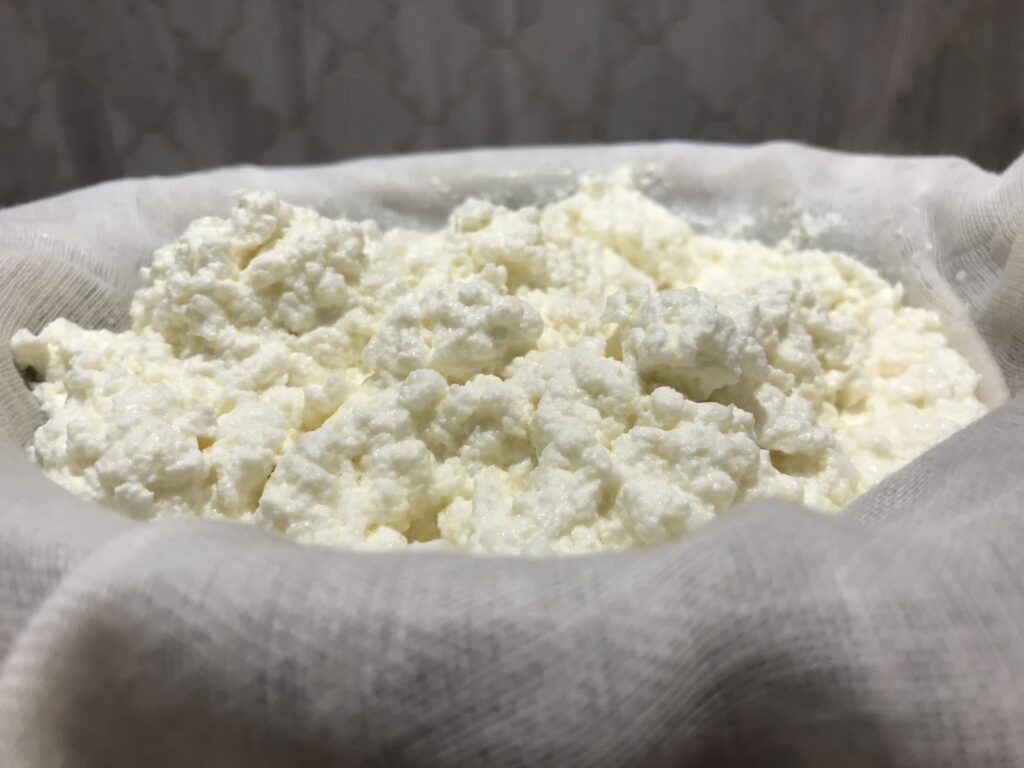
For a new year, we made paneer, a mild Indian cheese made from nothing but milk and few lemons. Paneer is often served in a tomato curry with peas or spinach, but I personally love it warm on toast or a chapathi, straight out of the pot, when the cheese is still soft and creamy, almost like ricotta. A good draining of the whey (aka, milk water) can yield a firmer cheese, great for frying or grilling and spicing. The process is much easier than it looks, and extremely rewarding! The recipe below makes about one cup of cheese, but feel free to double or triple for larger quantities.
Bring one half gallon of whole milk to light boil, stirring the milk slowly from time to time.
When you notice steam emerging from the milk, add the lemon juice, and gently stir the milk again.
You should begin to notice the cheese separating from the whey (aka, milk water). Continue to gently stir or simply wait for the cheese to fully separate.
Place your cheese cloth over a heat-resistant and large bowl, and pour the cheese and whey mixture into the cheese cloth.

When most of the whey has drained, lift up the cheese cloth to drain out extra liquid. Continue the process, squeezing out as much water as you can. You may also hang your cheese cloth over a sink -- anything to help remove the excess liquid!

When the cheese looks mostly dry, let it cool. Then, shape it as you intend to cook it (cubes, balls, etc.) and refrigerate.

Ingredients
Directions
Bring one half gallon of whole milk to light boil, stirring the milk slowly from time to time.
When you notice steam emerging from the milk, add the lemon juice, and gently stir the milk again.
You should begin to notice the cheese separating from the whey (aka, milk water). Continue to gently stir or simply wait for the cheese to fully separate.
Place your cheese cloth over a heat-resistant and large bowl, and pour the cheese and whey mixture into the cheese cloth.

When most of the whey has drained, lift up the cheese cloth to drain out extra liquid. Continue the process, squeezing out as much water as you can. You may also hang your cheese cloth over a sink -- anything to help remove the excess liquid!

When the cheese looks mostly dry, let it cool. Then, shape it as you intend to cook it (cubes, balls, etc.) and refrigerate.

